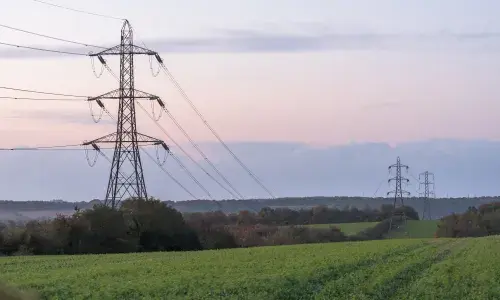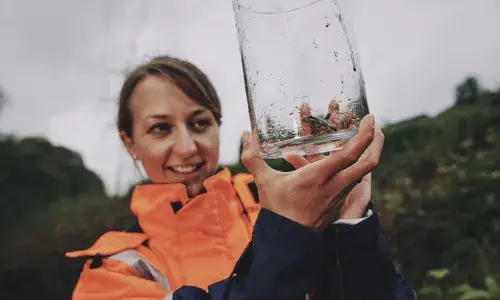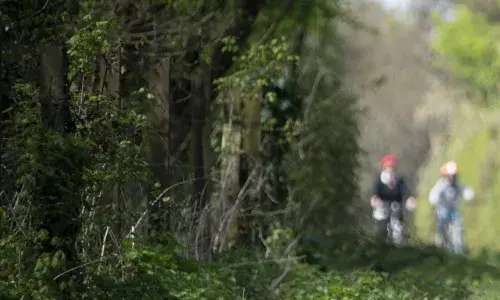
Embracing biodiversity in Wales
We’ve recently published a report showing how we are working to maintain and enhance biodiversity across Wales. Our Sustainability Specialist, Jonathan Miller, shares his thoughts and highlights some key case studies from the report.
The enduring climate crisis, along with recent rises in energy costs and gas shortages, sets the backdrop against the pressing need to connect more new sources of low carbon generation. Alongside climate concerns, there is an increasing focus on understanding the value of protecting our natural world, and our own impacts on its longevity.
Renewable potential in Wales
Wales, with its abundant natural resources, will be a key source of future low carbon generation, helping the UK to meet its overarching net zero goals. What’s more, Wales has its own ambitious climate targets, including for 70% of its electricity demand to be met by Welsh renewable energy sources by 2030.
At National Grid Electricity Transmission (NGET), we are enabling the green energy transition across Wales and throughout our network, by investing in and upgrading our grid infrastructure, facilitating connections to more forms of low carbon power. Across all of our projects, we are committed to deliver these essential works in ways that preserve and enhance biodiversity and nature, and by reducing our overall environmental impact.
Bold actions for a sustainable future
Last year, we at NGET published our Annual Environmental Report, which shows the strong progress we are making towards the delivery of our environmental and sustainability pledges, as set out in our Environmental Action Plan. The Plan sets firm targets over a 5-year period, including commitments to increase the environmental value of our non-operational land by 10%, and to deliver net gain of at least 10% in environmental value on all our construction projects.
I am proud to share this Biodiversity and Resilience of Ecosystems report which focuses on our activities in Wales. I encourage our stakeholders to read the report for the detail, however I have picked out several key case studies highlighting our progress on promoting biodiversity and preserving the natural environment in Wales below.

Embracing biodiversity
We’re embedding biodiversity in our Pentir-Dinorwig Cable Project, where we are installing three new cable circuits between Dinorwig Power Station and our substation at Pentir, to replace old cables that are nearing the end of their operational life. Among other initiatives, we’ve implemented a major design change to avoid crossing 4km of farmland and we’ve designed using Horizontal Directional Drilling (HDD) to avoid a Site of Special Scientific Interest (SSSI). When installed, the cables will maintain the security of electricity supplies for the local area and beyond.
We will be delivering biodiversity net gain (BNG) on our Snowdonia Visual Impact Provision (SVIP), a project to underground existing overhead lines to reduce the visual impact of electricity infrastructure in the Snowdonia National Park and Area of Outstanding Natural Beauty (AONB). The SVIP relocates a section of overhead line to below ground within a newly constructed tunnel beneath the Dwyryd Estuary between Minffordd and Cilfor.
Improving habitats
As part of our partnership with the Wildlife Trust of South and West Wales, we’ve funded improvements to key water vole habitats in the Lower Kenson Valley. We’re supporting the resilience of a species that are now critically endangered in Wales due to predation, loss of habitat and changes in land management.

Landscape Enhancement Initiative
We’ve supported the planting of nearly eight hectares of native woodland and restored 871m of hedgegrow at Maentwrog. Through our Landscape Enhancement Initiative, we’re supporting three projects in Snowdonia to enhance the special qualities of the park. We’re also helping to conserve the landscape’s ancient woodland at several sites, by funding a programme to control invasive plant species.
We’re helping to restore key features of the natural landscape within 3km of two sets of overhead transmission lines in Clwydian Range and Dee Valley AONB. Beginning in March 2018, the four-year project has already started to improve the character of the landscape through hedge and tree planting, the establishment of new ponds, and drystone wall restoration.

Restoring ancient land
We worked with Rhonda Taff Council and other specialist stakeholders to develop a 25-year habitat management plan to reverse the decline and restore an ancient peatbog on our land in Rhigos, South Wales. This formed part of our works to deliver a new 400KV substation to connect to the Pen y Cymoedd onshore windfarm in South Wales.


